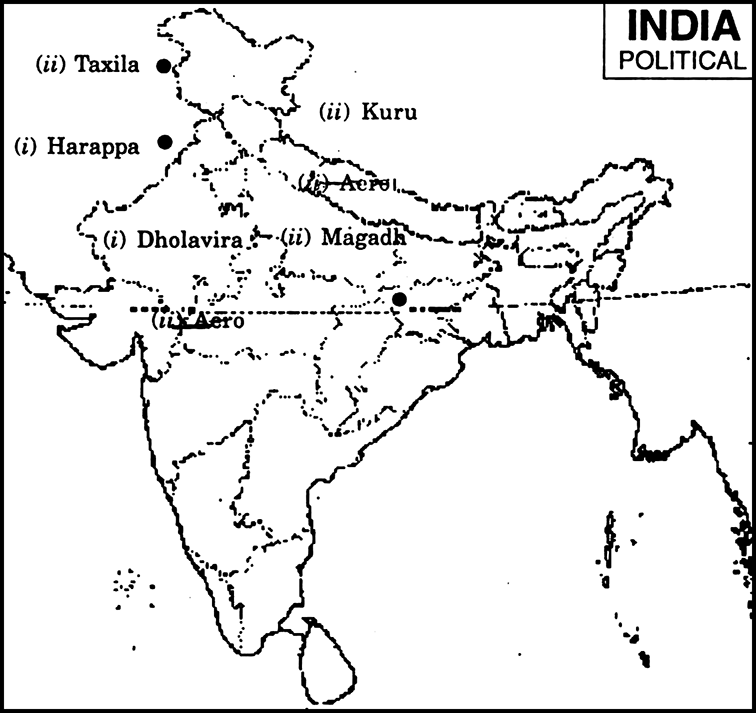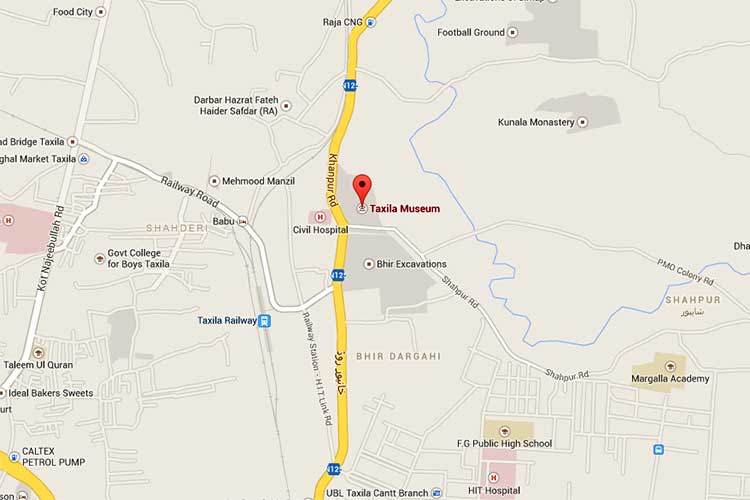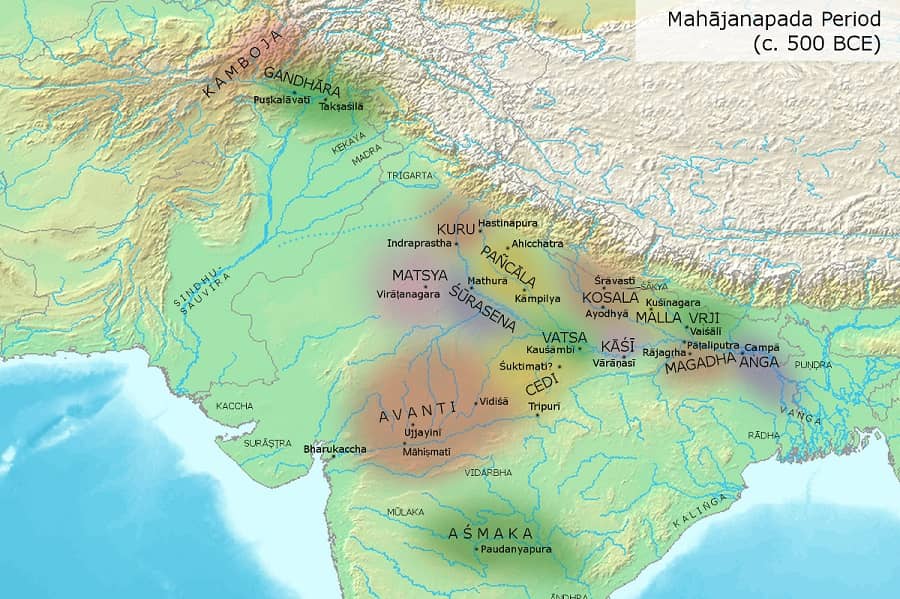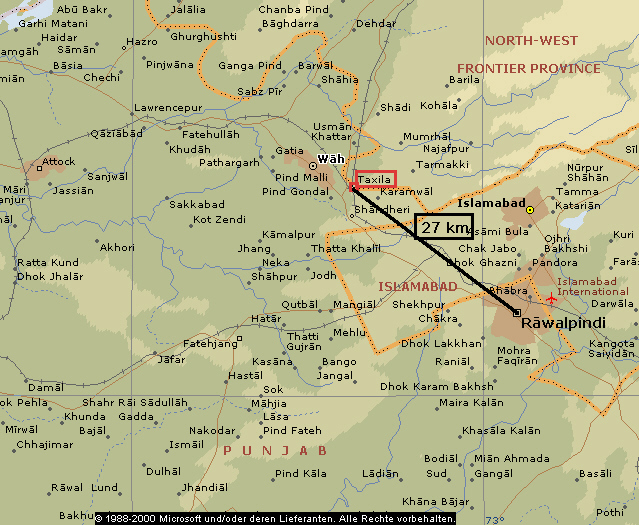
Map showing ancient passes connecting Taxila with Kashmir Download Scientific Diagram
An archaeological site in present-day Rawalpindi, Pakistan. Founded c. 1000 BCE, the site was located along trade routes between Central Asia and the Indian subcontinent. It was successively controlled by the Achaemenid, Mauryan, Indo-Greek, Indo-Scythian and Kushan Empires. From the Sanskrit takshashila, meaning "city of cut stone."

Okar Research Chanakya, Kautilya & Takshashila (c. 370 283 BC)
Receive Multiple Instant Quotes. Book Your Taxi Online With Taxicode

Taxila Location In India Map United States Map
Taxila, located in present-day Pakistan, is one of the most significant archaeological sites in South Asia. The site was a major center of learning and trade in ancient India, and the city's remains provide essential insights into the region's architectural history.

On the political map of India, mark the following cities Sarnath, Prayag, Patliputra, Ujjain
Taxila, before Partition, was located in India, but the city is now in the Rawalpindi District of Punjab, Pakistan. The city is the top tourist destination in Pakistan.

Mauryan Empire at its Peak under Emperor Ashoka, with Taxila as the Capital of the Northern
Taxila, located in the Rawalpindi district of Pakistan's Punjab province, is a vast serial site that includes a Mesolithic cave and the archaeological remains of four early settlement sites, Buddhist monasteries, and a Muslim mosque and madrassa.

Kinderzeitmaschine ǀ MauryaReich und König Ashoka
University of ancient Taxila Coordinates: 33.74°N 72.78°E The University of ancient Taxila ( ISO: Takṣaśilā Viśvavidyālaya) was an ancient higher-learning institution in Taxila, Gandhara, in present-day Punjab, Pakistan, near the bank of the Indus River. It was established as a centre of education in religious and secular topics.

Taxila Location In India Map United States Map
The ancient city of Taxila was established at the pivotal juncture of Central Asia and the Indian Subcontinent. The ruins of the ancient city are located within the modern city of Taxila in Punjab, Pakistan. It is approximately 20 mi from Rawalpindi and Islamabad. Some of the city's ruins date back to the sixth century BCE when the Achaemenid.

Taxila Museum
Taxila (Old Indian Takshaçila, Greek Ταξίλα ): the ancient capital of the eastern Punjab, the country between the rivers Indus and Hydaspes. The site consists of several parts, which belong to the Achaemenid, Greek, and Kushan periods. History Monuments Map of Taxila

16 Mahajanapadas (with Capital) wbpscupsc
Its prosperity in ancient times resulted from its position at the junction of three great trade routes: one from eastern India, described by the Greek writer Megasthenes as the "Royal Highway"; the second from western Asia; and the third from Kashmir and Central Asia.

Fill Taxila in the Outline map of India Ancient India taxila takshasheela bharatmap mapwork
Over 2,500 years ago Taxila, 35 km from present-day Islamabad in Pakistan, was a major urban centre and place of learning. The key to understanding the story of Taxila is its geography. Taxila was located just off the great trade route known as the Grand Trunk Road (Uttarapatha) and connected the Indian subcontinent with Central and Western Asia.

INDIAN HISTORY THROUGH MAP PARTT HISTORY AND GENERAL STUDIES
File:Map of Taxila - The ancient geography of India, Volume 1 - Sir Alexander Cunningham - pg46.jpg Map of Taxila. The British archaeologist Sir John Marshall (1876-1958) conducted excavations over a period of twenty years in Taxila.. This is an archaeological site 3 km southwest of Taxila that has the earliest occupation, and preserves Neolithic remains going back to 3360 BC.

Map of India The Story of India Resources PBS
An early 20th Century map of Taxila showing the various archaeological sites in red by Sir John Marshall. Membership No ads. Encyclopedia. Index; Timeline; Maps; Book Reviews; Weights & Measures;. Super Intendent Government Printing India, Calcutta, 1918; Cite This Work. APA Style. Marshall, J. (2015, May 18). Map of Taxila.

Taxila buddha goes to college
Sirkap (Urdu and Punjabi: سرکپ) is the name of an archaeological site on the bank opposite to the city of Taxila, Punjab, Pakistan.. The city of Sirkap was built by the Greco-Bactrian king Demetrius after he invaded modern-day Pakistan around 180 BC. Demetrius founded an Indo-Greek kingdom that was to last until around 10 BC. Sirkap is also said to have been rebuilt by king Menander I.

Taxila
Today, Taxila is situated at the western region of the Islamabad Capital Territory—to the northwest of Rawalpindi and on the border of the Punjab and North West Frontier Provinces—about 30 kilometers west-northwest of Islamabad, just off the Grand Trunk Road. History

Zum Beispiel Taxila (Quellenkunde zur indischen Gesch)
Takkasilā, Fig. 1 Marshall's map of Taxila (From Marshall, Guide to Taxila, Calcutta, Superintendent Government Printing, India, 1928) Full size image The immediate surroundings can be understood in terms of a valley divided in two by the east-west Hathial Ridge.

Map of Main Archaeological Sites in Taxila World Heritage Site (UNESCO... Download Scientific
The Taxila archaeological site is located in the province of Punjab, Pakistan, about 30 km north of the Capital Territory of Islamabad. It lies off the famous and historical Grand Trunk Road.